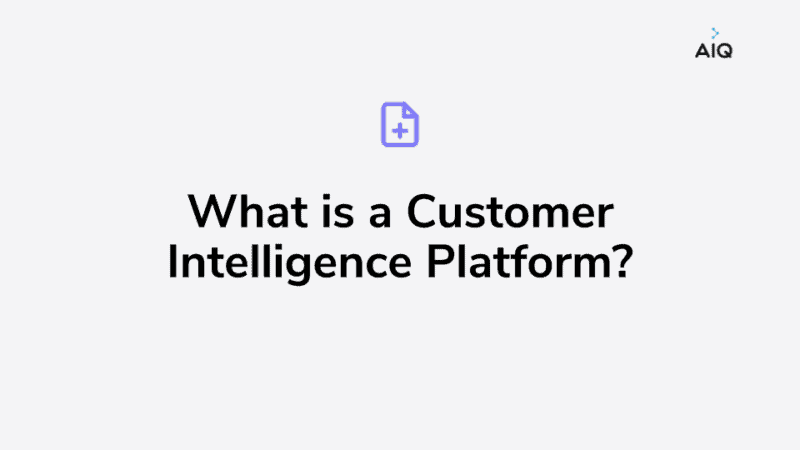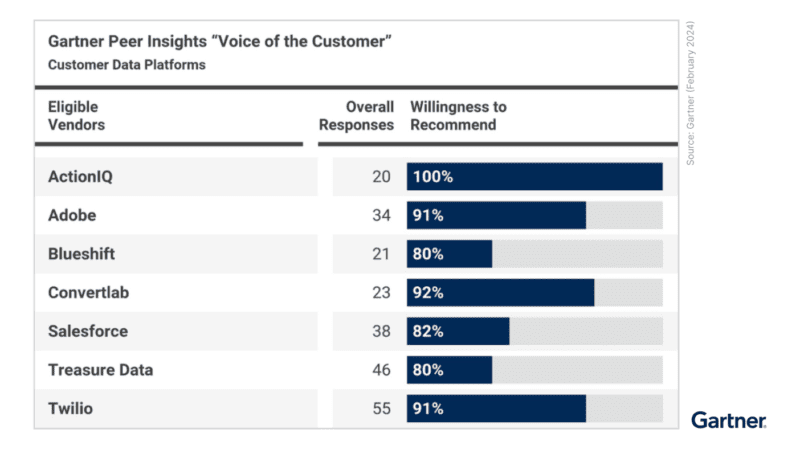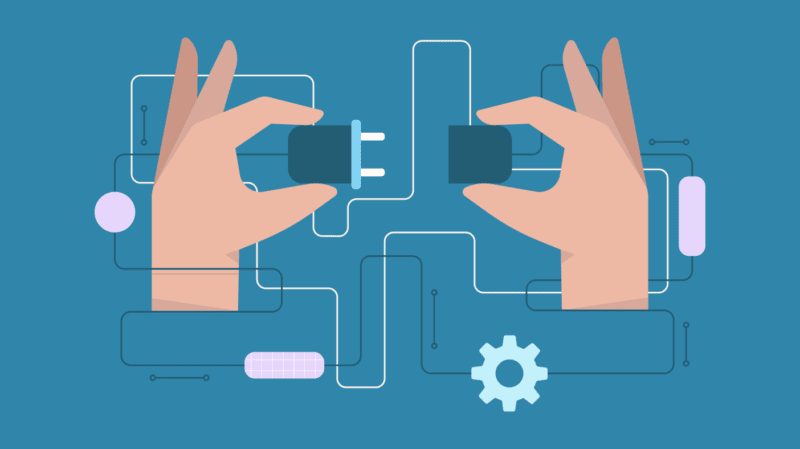What is a Customer Intelligence Platform?

A customer intelligence platform collects customer data from a range of relevant data sources, and unifies that data to make it analysis-ready. The platform then applies sophisticated analytics, using AI/ML as well as human-driven analytics to glean actionable insight from customer data.
The most effective customer intelligence platforms—also called customer data platforms (CDPs)—enable marketers to quickly build audiences based on those insights, and then seamlessly orchestrate a highly personalized customer journey across online and offline marketing, customer experience, and commerce touchpoints.
The rich, granular data housed in a customer intelligence platform, together with analytical and actionable insight, creates a three-dimensional picture of customers and their wants, needs, and preferences. However, it is the ability to turn customer intelligence into marketing action that truly differentiates leading customer intelligence platforms (or CDPs) from other customer data technologies.
To better understand what a customer intelligence platform (or CDP) is, it’s also helpful to understand what it is not. It is not a:
- Data management platform (MDM). These solutions only focus on customer identities, and do not turn insights into action.
- Data lake. Designed for IT organizations rather than marketers, data lakes are designed to gather all kinds of enterprise data, but they require data experts and analytics experts to derive insights—and they do not help turn data insights into action.
- Marketing cloud/multichannel marketing hub (MMH). These solutions are designed to manage and deliver marketing campaigns within email, social, text, and push channels, but are not built to gather and analyze the full breadth and depth of customer data gathered by sophisticated enterprises.
- Digital event distribution platform. Designed to help IT organizations share data about digital events across technologies (e.g. letting your email service provider (ESP) know that a frustrated customer has just complained to the call center), they do not empower marketers to build intelligence-driven, cross-channel campaigns.
- Digital personalization engine. These solutions are designed to personalize the user experience on a company’s website based on customer behavior, but do not extend to other channels.
- CRM system. Designed for logging direct customer interactions (e.g. customer questions, customer complaints, price quotes on products) and tracking basic customer information (e.g. name, phone, email), these solutions were not built to handle large amounts of rich, first-party data or third-party data. And they usually lack some or all of the following: customer matching, centralized decisioning, and/or orchestrated, cross-channel execution capabilities—which are key components of a modern customer intelligence platform (learn more about the differences between CDP versus CRM here).
Without a customer intelligence platform, marketers would have to depend on technical specialists and IT each and every time they wanted to create personalized, cross-channel consumer journeys based on deep customer intelligence. A customer intelligence platform speeds and automates that slow, time-consuming work—and in some cases can replace other technologies altogether.
How Customer Intelligence Platforms Work
A customer intelligence platform performs four key functions:
- Data collection. Via pre-built, real-time data connectors with any relevant first-party and third-party data source, the customer data platform collects and organizes vast amounts of granular information, including customer identities and customer behaviors and actions.
- Rich customer profiles. The platform automatically creates rich customer profiles by stitching together identity data from multiple sources, removing duplicates, and associating granular consumer behavior and actions with individual customer profiles. The result: a unified, consistent, dynamic, and unique record of customers’ engagement with your business.
- Intelligent, interactive customer segmentation. A customer intelligence platform enables marketers to interact with customer data—and the valuable customer insights derived from that data—to intelligently segment audiences and design authentic customer experiences that grow customer lifetime value (CLV). With out-of-the-box analytic models and a semantic layer that speaks the language of the business, marketers can build segments and audiences—and even create 1:1 personalization at scale—without having to involve IT.
- Automated orchestration of 1:1 personalized campaign journeys. Critically, the platform then turns these insights into actions via pre-built connectors across any and all campaign execution channels. Thus, they drive delivery of timely, relevant messages in whatever medium customers choose to interact with your brand.
Why Customer Intelligence is So Important
Three key factors are driving the growing interest in customer intelligence platforms:
- Rising customer expectations for personalization. In the age of Amazon and Netflix, consumers increasingly expect engagements that are highly personalized, timely, and relevant. They want you to know who they are, their preferences, and their history with your business. Increasingly, they reject mass, one-size-fits-all messages.
- An omni-channel world. Consumer channels keep proliferating, but customers still expect seamless experiences, regardless of the way they choose to engage. If they attempt to complete a transaction on your website tonight, they don’t want to have to re-explain all the details to a call center agent tomorrow morning.
- High cost of marketing. It is very costly and time-consuming for marketing and IT to cobble together ad hoc campaigns that draw on customer data from disparate systems. In addition, as the cost of advertising and marketing rises, marketers are under increasing pressure to measure ROI across marketing media (display advertising, email, direct mail, etc.).
Clearly, traditional approaches to marketing and sales are facing serious obstacles. In the last two decades, customer acquisition costs (CAC) have jumped on average 25% per year. Yet, the rewards of customer acquisition—in the form of customer lifetime value (CLV) and other customer KPIs—are either flat or declining. This is pushing brands to find new ways to reach consumers and strong customer relationship bonds with much more targeted, relevant messages.
The Key Benefits of a Customer Intelligence Platform
Customer intelligence platforms offer a range of benefits. Let’s explore them.
More accurate, predictive customer insights
A customer intelligence platform turns all kinds of customer data into analytic fuel. Data sources these platforms can ingest, unify, and turn into insights include:
- PII and other demographic or firmographic information—estimated income, dwelling type, age, gender, company type, industry, number of employees, and more
- Transactions—products purchased, purchase price, discounts, channels used to make purchases, and more
- Campaign and engagement data—campaigns and messages a customer has received as well as the resulting customer interaction; engagements across additional channels from marketing and advertising to sales and support
- Marketing metrics and scores—loyalty status, customer health scores, average click-through rate, lifetime value, and more
- Customer satisfaction—satisfaction scores from surveys, interactions with customer support associates, and other customer feedback
When you gather all these diverse kinds of data into individual customer profiles, you will have a rich set of actionable customer data and attributes which you—and your platform’s AI/ML engine—can combine and analyze in creative ways to discover new opportunities.
A customer intelligence solution can also ingest the findings of AI and other advanced predictive analytics, and then use them to further enrich customer data. The resulting “customer scores” instantly become one more intelligent attribute that can then be used to build a campaign. The possibilities are endless. Here are just a few examples that scratch the surface of what can be done when you’re empowered with deep consumer intelligence:
- Score the likelihood of a consumer to apply for a credit card and then target messages accordingly
- Predict customer churn and take proactive action to retain at-risk customers.
- Anticipate which users are likely to sign up for a newsletter, and personalize website messages and content accordingly
Accelerate acquisition and increase CLV by moving toward 1:1 personalization
Segmentation is the practice of dividing customers into groups that share similar attributes or affinities. In this way, businesses can target consumers with messages that are most likely to be relevant and have a higher likelihood of spurring consumers to action.
Before the advent of customer intelligence platforms, customer segmentation consisted of “pulling lists” from one or multiple customer databases, manually merging in attributes such as basic demographic information, whether a consumer has visited a store or website or store in the last 30 days, time since purchase, etc.—or some combination of these. Then everyone within the segment would receive the same offer or message at the same time.
Customer intelligence platforms are accelerating the transformation from traditional segmentation to what is called 1:1 personalization. Instead of pushing the same message to everyone in a segment simultaneously, 1:1 personalization understands the unique customer and understands whether a consumer is currently on a business’s website or app, chatting with a call center rep, or even inside a brick-and-mortar store.
By understanding the context in which a customer is interacting with your brand, in the moment, and then leveraging insights based on deep and broad data about that unique customer, a customer intelligence platform can deliver extremely timely and effective communications at the exact right time over the ideal channel(s).
Reduce marketing costs by automating analytics processes and empowering marketers
Traditionally, it has been slow and expensive to create a personalized marketing campaign at scale. Enterprises had to gather and unify billions, even trillions, of customer interactions, from purchase data to browsing histories—usually from disparate systems. And even when they did gather insights, they still struggled to leverage them in a coordinated way across disparate channels.
Customer intelligence platforms are designed to solve these problems. They empower marketing to access, interact with, and make actionable all that data—without relying heavily on IT or third-party vendors to do so. As a result, marketers can build campaigns that increase competitive advantage and boost ROI on a range of marketing investments.
What is the Future of Customer Intelligence?
The pace of investment in consumer intelligence is likely to increase, as brands realize that personalization at scale is vital to competitive advantage in an age where expectations for great customer experiences across every sector—from retail and media to financial services and hospitality—are set by the Amazons and Netflixes of the world. As both customer intelligence platforms and the marketers who use them become more sophisticated, expect marketing to migrate more and more from traditional segmentation to 1:1, contextual personalization.
Get Started with Your Customer Intelligence Strategy Today
ActionIQ and our industry leading CDP platform can help you plan and execute a customer intelligence strategy that deepens customer relationships and positively impacts your most critical marketing KPIs. For a consultation with one of our customer data and customer experience experts, contact ActionIQ.





